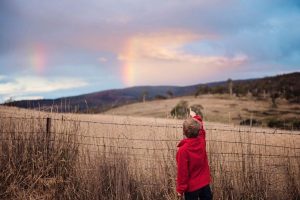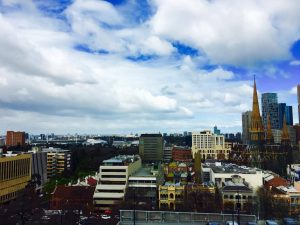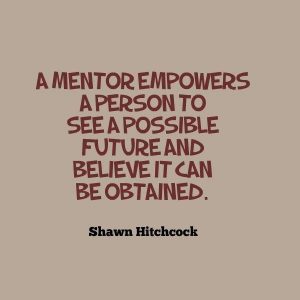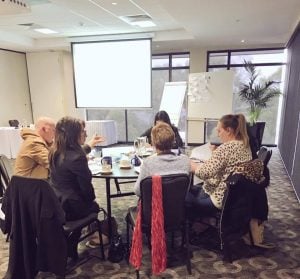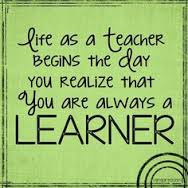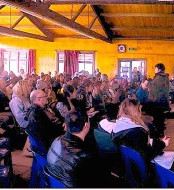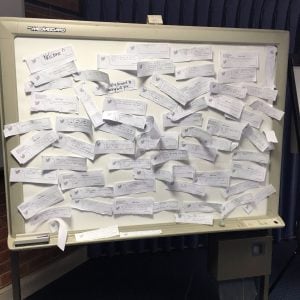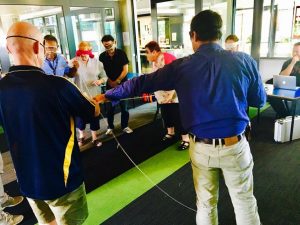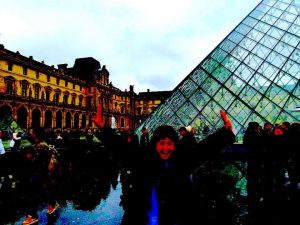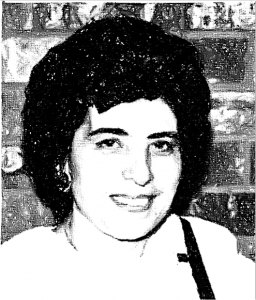I often encourage participants in my workshops to forget about what students with disabilities can’t do and focus on what they can. We can use this to approach the learning, get them comfortable and then push a little so the students begin to use what they can do to strengthen what they can’t. What do you think?
Let’s have a look.
Take the term disability. I’ve spent the past eight months asking research participants to describe for me what they think this is – you can articulate what you think it is now…
For me, it’s a negative term – something that gets in the way.
By simply crossing out the ‘DIS’, it becomes a totally different word, ‘ABILITY’.
Why don’t we focus on that for a moment? ABILITY. What can we change, put in place, introduce, or challenge so that we focus on the student’s ability rather than get all twisted up about what they can’t do? How would your planning and delivery of teaching and learning look then? Allow me to introduce Julian. He is a boy in your class, non-funded, presenting with the following ‘disabilities’
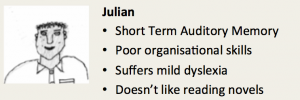
Julian – a non-funded student
Let’s just say we changed our thinking and presented Julian’s ‘disabilities’ as ‘ABILITIES’.
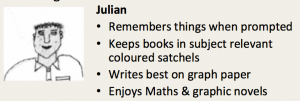
What Julian can do
How would planning a differentiated lesson for this class be different if we focused on what they can do?
Take another word – dyslexia. By removing the ‘dys’ we are left with the word LEXIA which has origins from the Greek and Latin and refers to reading. (It’s also a raisin, but that just doesn’t suit me here). *clears throat* If we were to address reading, how could we encourage it to those who have dyslexia? I have a few ideas, you may have others and the more we can share the better it will be, as we know that not all strategies work every time, all the time nor forever and so having a full bag can be rather useful.
Here’s a few of mine:
- Use sans-serif text where possible, that is – Verdana, Arial or Calibri and left-align the text
- Use visuals and have the child ‘read’ the picture, you might even record their voice and help them write the words alongside the visual later
- Use audiobooks – now there are 2 important points I’d like to make here
- The child should not just be listening to the audiobook, but should also follow the text
- You don’t have to spend $$$ to buy them – record yourself reading it or have someone else do it for you – parents, imagine if your child was listening to you read it on tape when you weren’t there in person?
Next word – dysgraphia, by dropping the ‘dys’ we are left with GRAPHIA, the process of writing. I have used graph paper successfully with a number of students to help formulate their letters within the spaces and I suspect it would also assist with numbers. We should never comment on how bad a child’s writing is (yes – no matter how bad) as this will only lead to them refusing to write altogether. The way one can improve their writing both aesthetically and content wise is to keep writing, don’t ruin that process, instead try a few different strategies to get encourage them. Use their body to form letters, take photos and have them trace around it – lots of different letters make words, sentences and so it goes. Help them manipulate further with plasticine, writing on the board, or on a wall (put paper up first!) with chalk on the path. I like to challenge them by having them use their ‘other’ hand – it’s fun!

The letter T
image: comicphonics.com
Getting the idea?
Let’s try one more – dyscalculia, difficulty understanding numeracy. If we remove the ‘dys’ we have CALCULIA – obviously closely related to calculus – you get the idea. How can we assist with this? There are many ways we can address it but one of my favourites is more for parents than Maths teachers… it’s cooking!
Imagine how many things we need to measure, count, estimate, time, weigh and plan? Trust me, the benefits out weigh the mess.
There are many others I haven’t shared but I’ll stop it here and take the opportunity to invite you to add to my list of ‘dys’ words made positive and even better – strategies to enhance them and my ‘dys’ words above. Please take the time to share an idea that might help an educator change the life of a child today.
Thanks for reading 🙂

